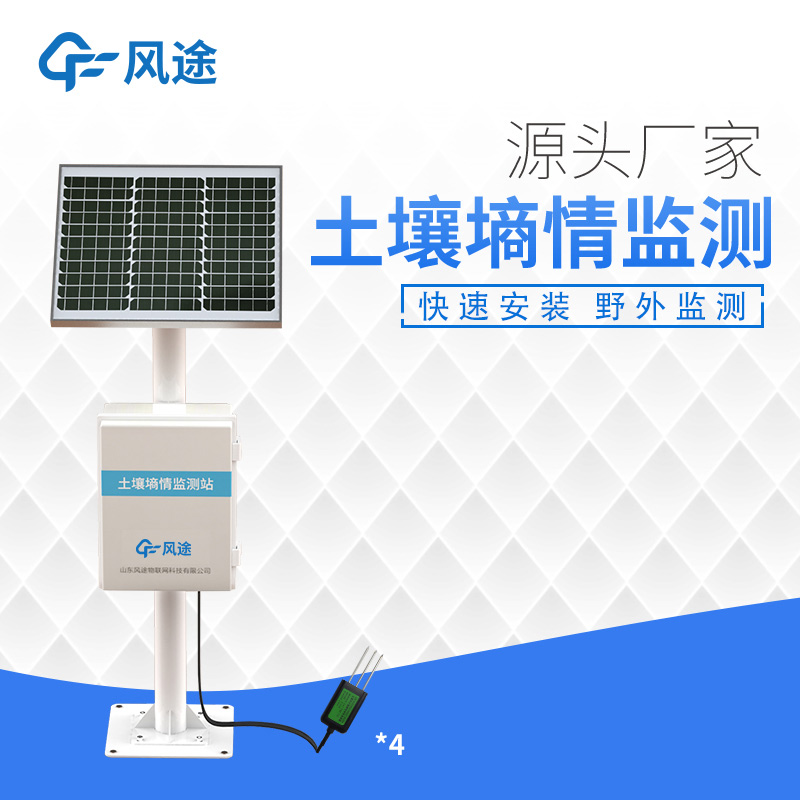Shandong Fengtu IOT Technology Co., Ltd
Sales Manager:Ms. Emily Wang
Cel,Whatsapp,Wechat:+86 15898932201
Email:info@fengtutec.com
Add:No. 155 Optoelectronic Industry Accelerator, Gaoxin District, Weifang, Shandong, China

Sales Manager:Ms. Emily Wang
Cel,Whatsapp,Wechat:+86 15898932201
Email:info@fengtutec.com
Add:No. 155 Optoelectronic Industry Accelerator, Gaoxin District, Weifang, Shandong, China
time:2024-06-07 08:39:13 source:Weather Station viewed:578 time
Moisture describes the level of moisture in the soil, which reflects the actual water content in the soil and is critical to plant growth. There are three key indicators of soil moisture: the maximum saturated water content of the soil, which is the degree to which the soil can become completely saturated with water; the field holding capacity, which is the maximum amount of water that the soil can hold under natural conditions; and the wilting coefficient, which is the minimum amount of water that can be found in the soil at the point where plants begin to show signs of wilting.
Conducting soil moisture monitoring to understand changes in soil moisture in agricultural fields is critical for timely understanding of crop water requirements. It is the basis for effective agricultural drought relief, guiding farmers in scientific irrigation and promoting water-saving agricultural technologies, and an important safeguard to ensure stable agricultural development.
The use of soil moisture monitoring stations enables more accurate irrigation management, which helps farmers to water at the right time and in the right amount according to the actual water demand of the crops, avoiding the waste of resources and improper irrigation problems commonly found in traditional irrigation methods. In this way, not only do crops receive a healthier water supply, improving growth quality and yields, but valuable water resources are also conserved, soil structure is protected, and sustainable agricultural development is achieved.
The Soil Moisture Monitoring System consists of three main components: a monitoring terminal, a soil moisture sensor and a solar panel. This system is not affected by the amount of soil salinity and can be placed underground for a long period of time for a variety of soils. It monitors soil temperature and moisture at different depths and can detect up to ten layers of soil, quickly providing comprehensive information on soil moisture. The system also reports on soil moisture status in real time, helping farmers keep abreast of soil conditions to guide irrigation and support disaster prevention and mitigation efforts.

Malodorous gases are a type of gaseous substances that can cause people unpleasant feelings. Industrial production, municipal sewage, sludge treatment, and waste disposal facilities are the main sources of malodorous gases.Malodorous gases are toxic to varying degrees to the human respiratory,...
best rated weather stations for home can monitor wind speed, wind direction, temperature, humidity, air pressure, pm2.5, pm10, noise and other meteorological elements....
Chemical plant explosion-proof weather stationModel: FT-FB01Manufacturer: Shandong Fengtu Internet of Things Technology Co., Ltd.Product features: FT-FB01 is a new generation of industrial-grade meteorological observation equipment based on ultrasonic series sensors. It adopts a modular design metho...
Wind speed and direction sensor, used to measure the instantaneous wind speed and wind direction of the instrument. Commonly used wind cup type wind direction anemometer, and sensor wind speed and wind direction meter.Ultrasonic wind speed and direction meter is wind way technology using ultrasonic...